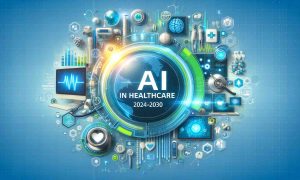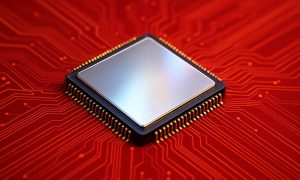

Luton, Bedfordshire, United Kingdom, Aug. 19, 2022 (GLOBE NEWSWIRE) — Exactitude Consultancy, the market research and consulting wing of Ameliorate Digital Consultancy Private Limited has completed and published the final copy of the detailed research report on the IoT in Healthcare Market.
The (Internet of Things) IoT in Healthcare Market is anticipated to advance at a CAGR of 14% to reach $ 241.3 billion by 2029.
IoT technology bridges the gap between digital and physical data sources in the healthcare sector by continuously watching over patient behaviour. Technologies centred on IoT infrastructure are targeted at enhancing the nature of telehealth services to improve accessibility of healthcare services, lessen the operational load on healthcare facilities, and simultaneously enable the creation of a digitised health ecosystem. The overall growth in the IoT in healthcare market is fueled by factors like the rising number of digital health initiatives from governments around the world, the growing need to lower healthcare costs, the rising emphasis on patient-centric care delivery, and the growing adoption of smartphones and high-speed networking and connectivity solutions.
Get Access to sample Report Pages
APAC is expected to hold the highest CAGR during the forecast period
The global IoT in healthcare market spans five major continents: North America, Europe, the Middle East and Africa (MEA), and Latin America. Since the APAC area is home to more than 50% of the world’s population, any significant technology advancements, like those being heralded by IoT, are expected to have a significant impact on the region’s future. APAC is anticipated to offer promising potential for the deployment of IoT in healthcare solutions since many Asian nations, including China, Japan, and India, are utilising information-intensive IoT technologies to meet the rising demand for healthcare services.
Recent Developments
- Microsoft Corporation announced a strategic collaboration with ZEISS Group to enhance patient care through data-driven healthcare solutions. The companies aim to enhance treatment, device management and improve clinical workflow using a new digital connected solution.
- In April 2019, Royal Philips and Spencer Health Solutions expanded their partnership to offer in-home medication adherence and the telehealth platform of Philips to chronically ill patients in selected European Union (EU) countries.
| Report Attribute | Details |
| Revenue forecast in 2029 | US$ 241.3 billion |
| Growth Rate | CAGR of 14% from 2022 to 2029 |
| Base year for estimation | 2021 |
| Historical data | 2017-2021 |
| Forecast period | 2022 to 2029 |
| Quantitative units | Revenue in USD million and CAGR from 2019 to 2025 |
| Report coverage | Revenue forecast, company ranking, competitive landscape, growth factors, and trends |
| Segments covered | Component, connectivity technology, end-use, application, region |
| Regional scope | North America; Europe; Asia Pacific; Latin America; Middle East & Africa |
| Country scope | U.S.; Canada; Germany; U.K.; France; Russia; Italy; Spain; Netherlands; Sweden; Japan; China; India; Australia; Singapore; South Korea; Brazil; Mexico; Argentina; South Africa; Saudi Arabia; UAE |
| Key companies profiled | Medtronic (Ireland), Cisco Systems (US), IBM Corporation (US), GE Healthcare (US), Resideo Technologies (US), Agamatrix (US), Armis (US), Bosch (Germany), Capsule Technologies (US), Comarch SA (Poland), HQSoftware (Estonia), Huawei (China), Intel (US), KORE Wireless (US) |
IOT in Healthcare Market Key Players
The IOT in healthcare market key players Medtronic (Ireland), Cisco Systems (US), IBM Corporation (US), GE Healthcare (US), Resideo Technologies (US), Agamatrix (US), Armis (US), Bosch (Germany), Capsule Technologies (US), Comarch SA (Poland), HQSoftware (Estonia), Huawei (China), Intel (US), KORE Wireless (US), , Microsoft Corporation (US), Oracle (US), OSP Labs (US), Oxagile (US), PTC (US), , Royal Philips (Netherlands), R-Style Labs (US), SAP SE (Germany), Sciencesoft (US), Siemens (Germany), Softweb Solutions (US), STANLEY Healthcare (US), Telit (UK), and Welch Allyn (US) and Others.
Browse Complete Premium Report:
Market Dynamics
Due to the rising number of problems in the early years of life, people all over the world are becoming more aware of self-health management. The youthful and energetic population is being pushed to use wearable devices due to the growing awareness of health issues. The development of wearable medical technology has made it simple and affordable to keep track of health issues. For instance, according to the International Diabetes Federation (IDF), diabetes affects the majority of people in the globe. However, 46% of patients do not receive a timely diagnosis. As a result, people are turning to wearable medical technology to maintain frequent health checkups. The first firms to have their glucose monitor devices, which assist track blood sugar levels for 90 days, approved by the FDA are Dexcom and Eversense.
Driving Factors
IoT technology makes use of artificial intelligence (AI) capabilities to provide enhanced solutions for healthcare practitioners, including enhancing prediction accuracy, automating processes, and optimising outcomes. In order to provide patient-centric gadgets, medical device makers are also incorporating AI technology into their products. Healthcare providers may diagnose and anticipate illnesses in real-time with the use of AI-enabled IoT devices. AI, for instance, can assist healthcare professionals in quickly diagnosing challenging scans, such as cancer, by increasing the scan quality.
Key Market Segments: IoT in healthcare Market
IOT in Healthcare Market by Component, 2022-2029, (In USD Billion)
- Medical Devices
- Wearable External Medical Devices
- Implanted Medical Devices
- Stationary Medical Devices
- Systems And Software
- Remote Device Management
- Network Bandwidth Management
IOT in Healthcare Market by Application, 2022-2029, (In USD Billion)
- Telemedicine
- Store-And-Forward Telemedicine
- Remote Patient Monitoring
- Interactive Medicine
- Clinical Operations and Workflow Management
IOT in Healthcare Market by End User, 2022-2029
- Hospitals, Surgical Centres, And Clinics
- Clinical Research Organizations
- Government and Defence Institutions
- Research and Diagnostic Laboratories
IoT in healthcare Market Growth Opportunities
The greatest (Internet of Things) IoT in healthcare market in the healthcare industry is telemedicine. The growth in this market is primarily being driven by the increasing adoption of telemedicine in the healthcare infrastructure of many nations, the rising demand for IoT in healthcare Market as a result of an ageing population, the increasing use of home healthcare, and the growing demand to make healthcare services more accessible in rural areas.
Given the reduced doctor-to-patient ratio in many nations throughout the world, IoT in healthcare Market is rapidly being considered as an appropriate way to improve reach and accessibility of medical services. IoT solution providers can take advantage of these huge growth potential to fill the gap in the market for medical services by offering cutting-edge technological platforms.
Browse More Information Technology & Telecommunication Market Reports by Exactitude Consultancy
Smart Electricity Meters Market
A smart meter is an electronic device that records information such as consumption of electric energy, voltage levels, current, and power factor. Smart meters communicate the information to the consumer for greater clarity of consumption behaviour, and electricity suppliers for system monitoring and customer billing.
Food Anticaking Agents Market
Anti-caking agents are processed or gritty materials used as additions in sources to avoid lumps. Anti-caking compounds are incorporated into powdered goods for convenience of consumption, packaging, and transportation. Water, alcohol, and other organic solvents are all soluble in anti-caking chemicals.
Minimally Invasive Surgical Instruments Market
Doctors utilize a number of procedures in minimally invasive surgery to operate with less damage to the body than open surgery. Minimally invasive surgery is linked to less discomfort, a shorter stay in the hospital, and fewer problems.





























